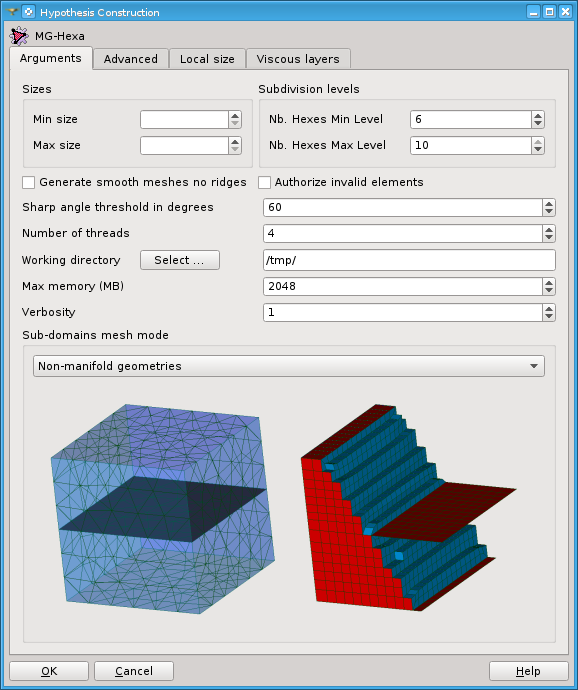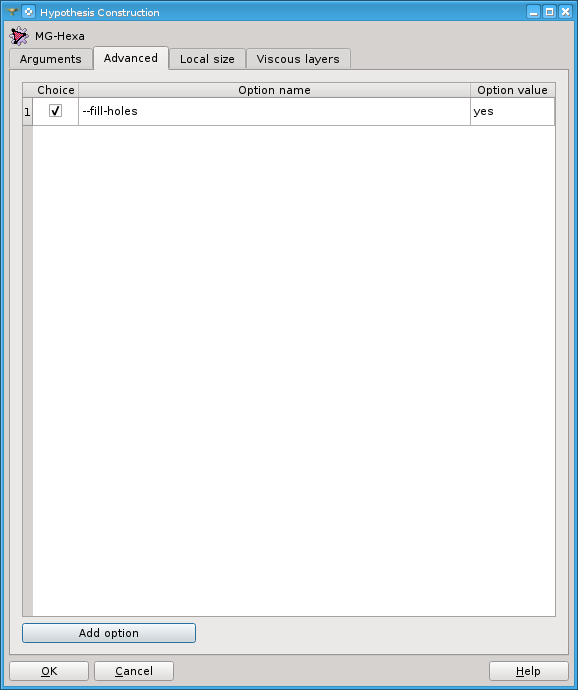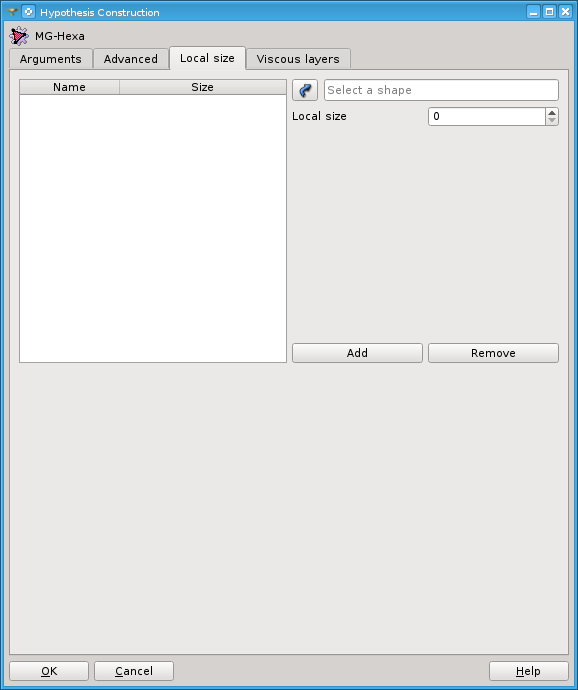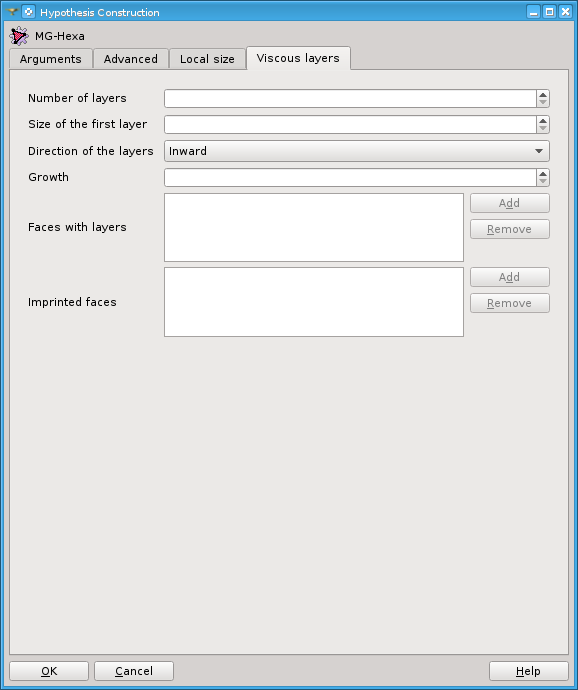Version: 8.3.0
MG-Hexa Parameters hypothesis works only with MG-Hexa algorithm. This algorithm is a commercial software.
To get a license, visit http://www.meshgems.com/meshgems-products.html

Name - allows to define the name of the hypothesis (MG-Hexa Parameters by default).
Min size - allows defining the minimal size of the elements (overrides Nb. Hexes Max Level value).
Max size - allows defining the maximal size of the elements (overrides Nb. Hexes Min Level value).
Nb. Hexes Min Level - allows defining the minimal level of recursive partitioning on the initial octree cube.
Nb. Hexes Max Level - allows defining the maximal level of recursive partitioning on the initial octree cube.
Generate smooth meshes no ridges - specifies that the mesher can ignore ridges. A ridge is a geometrical entity (a sharp edge). The resulting meshes will have better quality elements, at the price of "smoothing" out the geometry.
Authorize invalid elements - specifies that the mesher must conform as much as possible to the geometry (especially the sharp edges). The resulting meshes may contain invalid elements (but with positive volumes: for example, three vertices of an hexahedron on the same edge), for the benefit of better geometry accuracy.
Sharp angle threshold in degrees - specifies the angle between two triangles above which the hex mesher will consider the edge common to these two triangles as being a "ridge". A ridge is a geometrical entity (a sharp edge) which has to be kept as it is in the final hex mesh.The default value is 60 (degrees).
If you raise this value, the hex mesher will detect less ridges, and the final solid mesh will therefore be smoother. On the other hand, if you reduce this value, more ridges will be detected and the algorithm will face harder situations to conform to.
Number of threads - specifies the number of threads to be used (this should be the number of cores or processors of a shared memory parallel architecture).
Working directory - specifies the directory where the input/output files will be created.
Verbosity - specifies the verbose level to print information on meshing steps.
Max memory (MB) - specifies the maximum allocatable memory in MegaBytes.
See Also a sample TUI Script of the creation of a MG-Hexa mesh

In Advanced tab page you can specify advanced options of MG-Hexa not exposed in other pages.
Add option adds a line to the table where you can type an option and its value as text. A check box in the first column activates/deactivates the option of the current row. A deactivated option will be erased upon pressing Ok.
The local size allows you to drive locally the density of the 3D mesh. The area where the mesh has to be refined is given as a geometrical shape.

The viscous layers allows you to set up parameters of Viscous Layers supported by MG_Hexa mesher.
